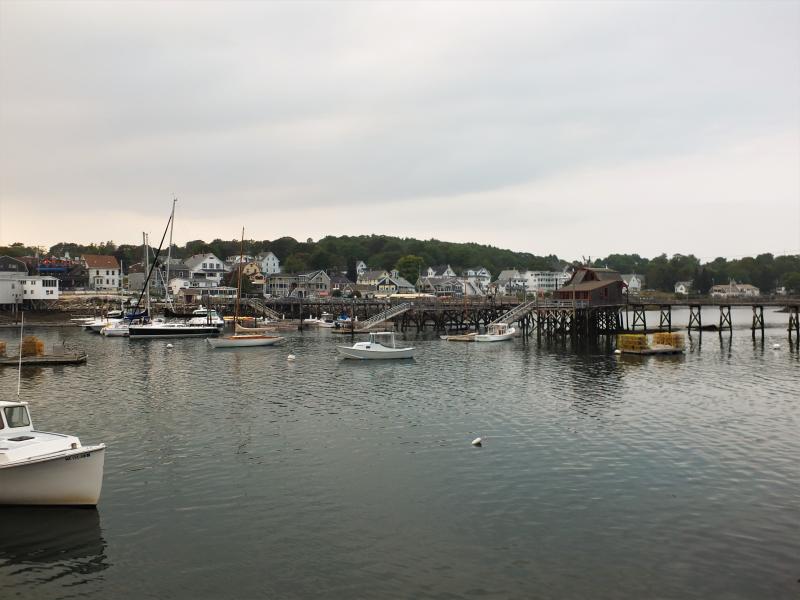East side workgroup discusses land use
The planning board advisory workgroup met for its second time on Jan. 10 to discuss resolution of permitted uses, a zoning approach, and residential density and location to the current maritime waterfront district along Atlantic Avenue.
The group reviewed more than 60 uses related to open space, water, residential, commercial, industrial, institutional and public planning.
“In general terms the guidance (is) to keep any existing water-oriented uses, and add the commercial uses that prompted this effort (e.g. motels, hotels, inns) along with those that were consistent with the town's downtown business district,” Selectman Bill Hamblen said in an email.
As far as multi-family housing, Hamblen explained that the number of units allowed in the proposed district will depend on proportions of residential units and commercial development. Lincoln County Planner Bob Faunce and Gorrill Palmer Consulting Engineers’ Dan Bacon, both members of the workgroup, have been assigned to looking at flexible zoning rules while, at the same time, limiting density.
Hamblen referred to a moment during a previous meeting in which a member of the audience suggested using tax incentives to encourage and keep commercial marine activity. During this meeting, the group indulged the idea of bringing up the Maine Working Waterfront Tax Law. The law allows for any waterfront parcel using 90 percent or more land as working waterfront to deduct 20 percent of its estimated market value. Parcels using 50 percent or more land as working waterfront may deduct 10 percent from its estimated market value. The law also allows parcels engaged in permanent protections from changes in land use to deduct 50 percent in taxes using 90 percent of the land for working waterfront or 40 percent using 50 percent of the land for working waterfront.
East side resident and business owner John Seitzer said the many worries include the prospects of privatization, public access, parking and aesthetics.
Said Seitzer, “I don’t agree with (multi-family housing) just because with the feel and the look of the harbor, those really don’t represent current housing or any of the structures that are over there. I don’t even know what (that exists) would be close to that … New developments on the east side would offer a perfect time for positive change by adding public parking and a sidewalk to the west side of the avenue. When a property is developed on the water side, there could be a requirement for public parallel parking and a sidewalk.”
Citing concern for his own business, Seitzer made a point that more housing will not generate more retail income to entice visitors to the east side of the harbor save for hotels, motels and restaurants.
East side businessman Doug Carter claimed that lingering over public access would be inadvisable because the harbor already has many points of access – boat launches, Whale Park, town floats, Fish Pier, and the footbridge, said Carter naming a few. He also went back to the subject of building height restrictions.
“Let’s say the tallest building is 38 feet,” said Carter. “Then just go with (a limit of) 38 feet, then no one is in noncompliance. If the view of the harbor is going to be blocked, it’s going to be blocked by 20 feet. You’re not going to lose no more view of the harbor with another story.”
Donna Piggott, owner of Atlantic Avenue’s Atlantic Ark Inn for over 30 years, raised concerns over the design concepts presented when business owner Paul Coulombe brought up in November changing the maritime water district to accommodate reinvestment. Piggott claimed such a change in the properties directly across from her would obstruct her business’s harbor view which is a main selling point to visitors.
Downtown business owner Julie Roberts countered Piggott’s concern. Roberts said there has been plenty of change over the past 35 years.
“I’m really sorry,” said Roberts. “But if you don’t own the land in front of the view, you can lose the view.”
In separate responses to the Boothbay Register, Hamblen, Bacon and town code enforcement officer Geoff Smith all said they are pleased with the work done thus far on exploring business and maritime-friendly zoning change options.
Said Hamblen, “There are still important issues ahead of us, but I am confident we will end up with a zoning district that will allow for the much needed investment, but that still protects the town. Don't forget the final word on this effort rests with the voters of the town.”
The workgroup meets next at 7 p.m. Wednesday, Jan. 24.
Event Date
Address
United States





























